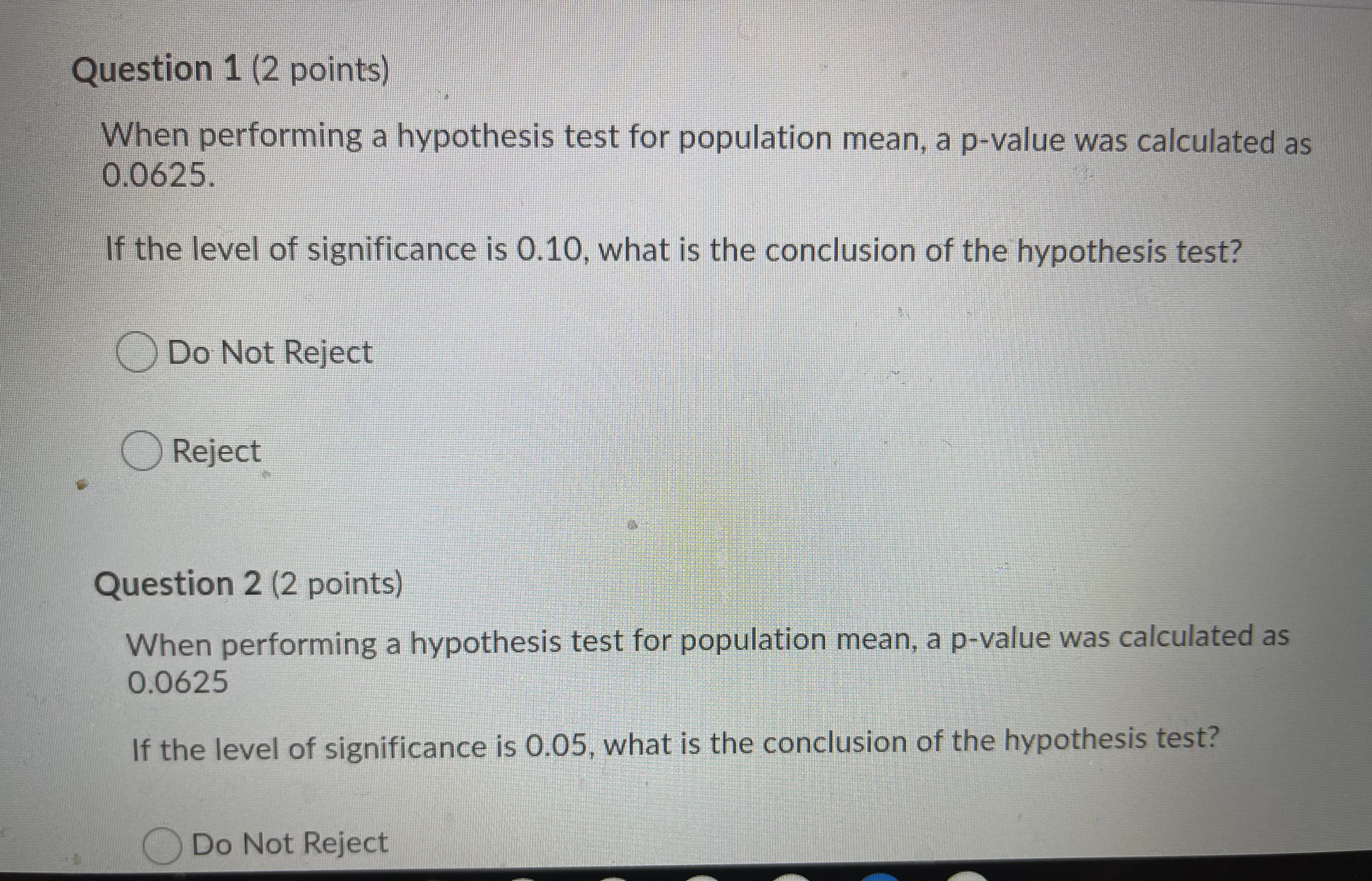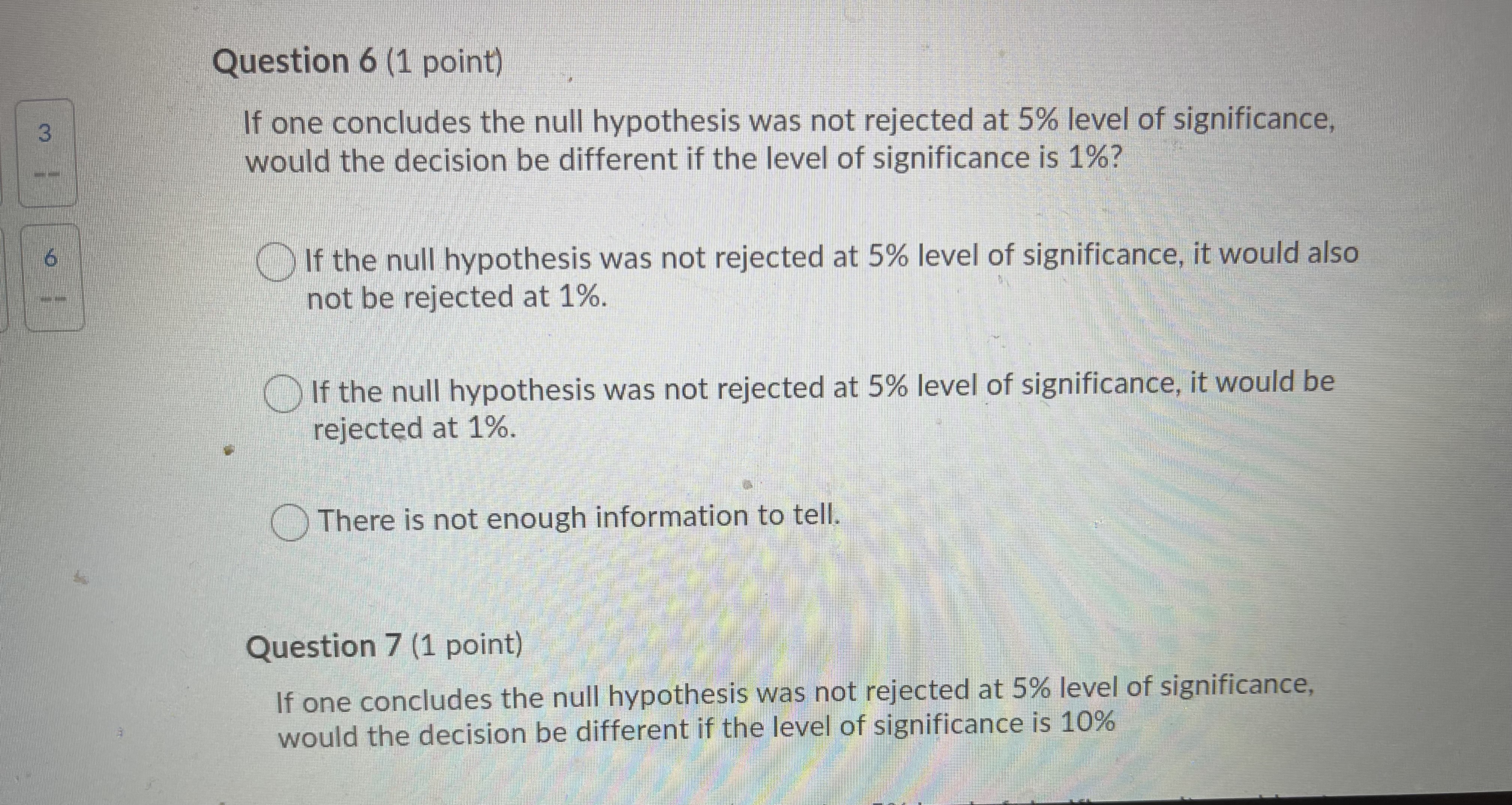Question 1 (2 points) When performing a hypothesis test for population mean, a p-value was calculated as 0.0625. If the level of significance is 0.10, what is the conclusion of the hypothesis test? Do Not Reject Reject Question 2 (2 points) When performing a hypothesis test for population mean, a p-value was calculated as 0.0625 If the level of significance is 0.05, what is the conclusion of the hypothesis test? Do Not RejectQuestion 3 (2 points L: When performing a hypothesis test for population mean, a p-value was calculated as 0.0625 If the level of significance is 0.01, what is the conclusion of the hypothesis test? 5 6 Do not Reject Reject Question 4 (1 point) If one concludes the null hypothesis was rejected based at 5% level of significance, would the decision be different if the level of significance is 1%? Accept RejectQuestion 4 (1 point) If one concludes the null hypothesis was rejected based at 5% level of significance, would the decision be different if the level of significance is 1%? Accept Reject Do not reject We do not have enough evidence to determine whether to reject the null hypothesis if the level of significance is 1%. Question 5 (1 point) If one concludes the null hypothesis was rejected based at 5% level of significance, would the decision be different if the level of significance at 10%?Question 5 (1 point) 3 If one concludes the null hypothesis was rejected based at 5% level of significance, would the decision be different if the level of significance at 10%? 6 At 10% significance, we would not reject the null. At 10% significance, we would reject the null. At 10% significance, we would not have enough evidence to determine. Question 6 (1 point) If one concludes the null hypothesis was not rejected at 5% level of significance, would the decision be different if the level of significance is 1%? If the null hypothesis was not rejected at 5% level of significance, it would alsoQuestion 6 (1 point) 3 If one concludes the null hypothesis was not rejected at 5% level of significance, would the decision be different if the level of significance is 1%? ()If the null hypothesis was not rejected at 5% level of significance, it would also not be rejected at 1%. ()If the null hypothesis was not rejected at 5% level of significance, it would be rejected at 1%. There is not enough information to tell. Question 7 (1 point) If one concludes the null hypothesis was not rejected at 5% level of significance, would the decision be different if the level of significance is 10%











